In the classic sci-fi movie “Iron Man,” Tony Stark’s suit can fly to him and assemble itself on his body with just a call.
According to Reuters, a team from the Korea Advanced Institute of Science and Technology (KAIST) has developed a lightweight wearable robot called the “WalkON Suit F1.” This exoskeleton robot can help paraplegics walk or climb stairs.
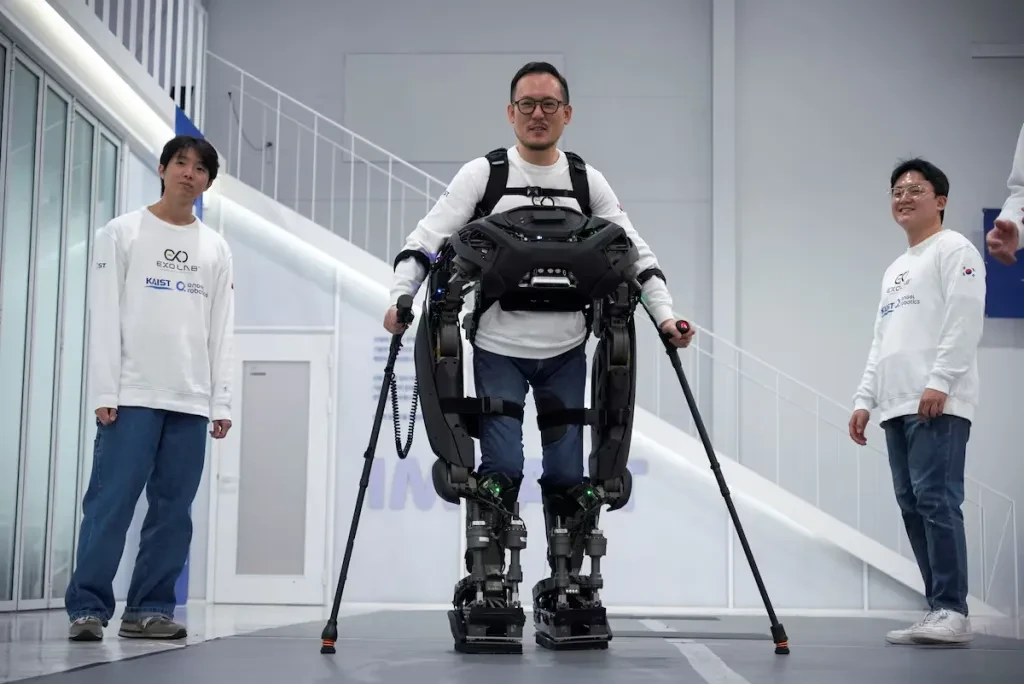
What makes this exoskeleton robot particularly special is its ability to automatically approach and attach itself to the patient, much like the Iron Man suit. Even if the patient is sitting in a wheelchair, the WalkON Suit F1 can independently help the patient stand up steadily without any external assistance.
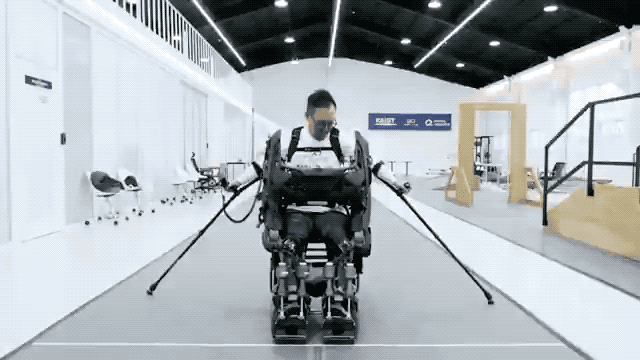

Additionally, the WalkON Suit F1 features a built-in “balance control system” that prevents users from falling by adjusting the user’s center of gravity. With this exoskeleton, patients can walk freely like normal individuals, freeing their hands from the need for crutches.
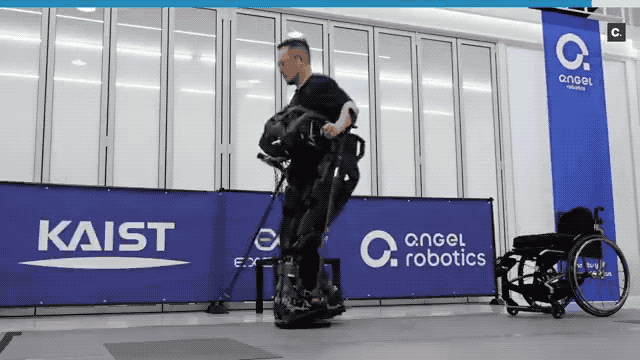
To achieve this functionality, the WalkON Suit F1 is equipped with numerous sensors that can detect over 1,000 signals per second. These signals are used to analyze and predict the user’s movement trends, allowing for precise control of the robot’s posture.
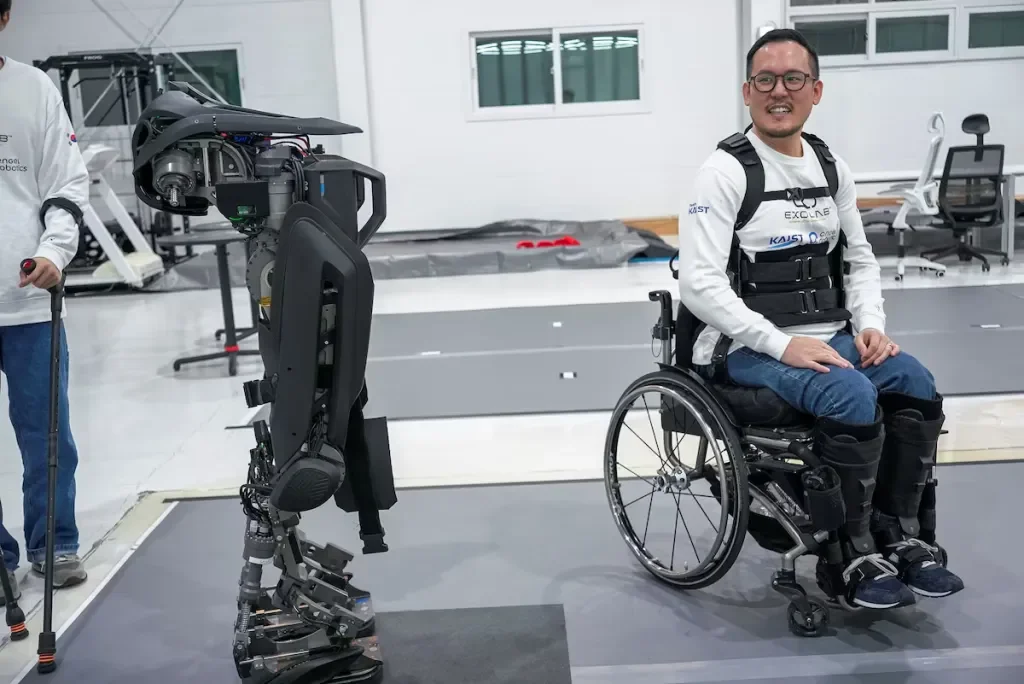
Since 2015, Professor Kyung-Jin Kong from KAIST has been leading the exoskeleton robot project, with the prototype WalkON Suit debuting in 2016. By 2020, the WalkON Suit 4.0 was capable of achieving a walking speed of approximately 3.2 kilometers per hour.
The KAIST exoskeleton research team aims to create a robot that seamlessly integrates into the daily lives of people with disabilities. Team member Park Jung-Soo mentioned that he drew inspiration from the movie “Iron Man.”
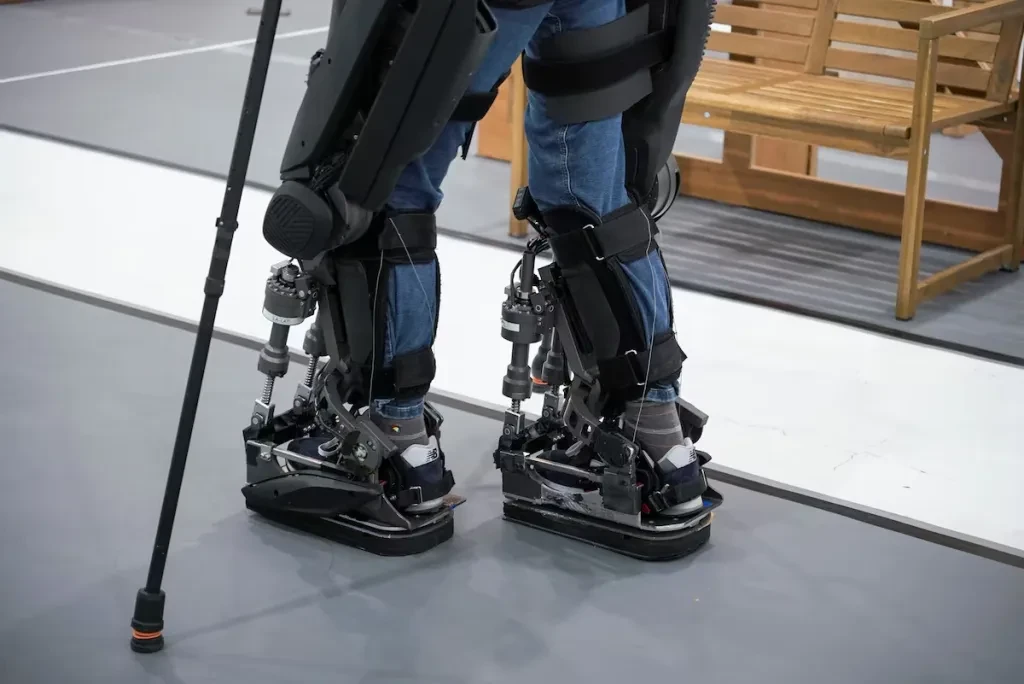
The WalkON Suit F1 is made from aluminum and titanium, weighing about 50 kilograms. It is powered by 12 motors that simulate joint movements during walking. Compared to previous versions, the motor output density has doubled, meaning it offers stronger performance in a more compact form.
Not only that, this exoskeleton robot is also equipped with a “visual recognition system.” This system can analyze the patient’s surrounding environment, recognize the height of stairs, and detect obstacles around them, helping patients navigate around them. This compensates for the sensory deficiencies of paraplegic patients and greatly enhances safety.
It is worth mentioning that the WalkON Suit F1 even integrates AI functionality. Its built-in neural network can learn and adapt to different patients’ habits and various surrounding environments, providing a “tailor-made” user experience for patients.
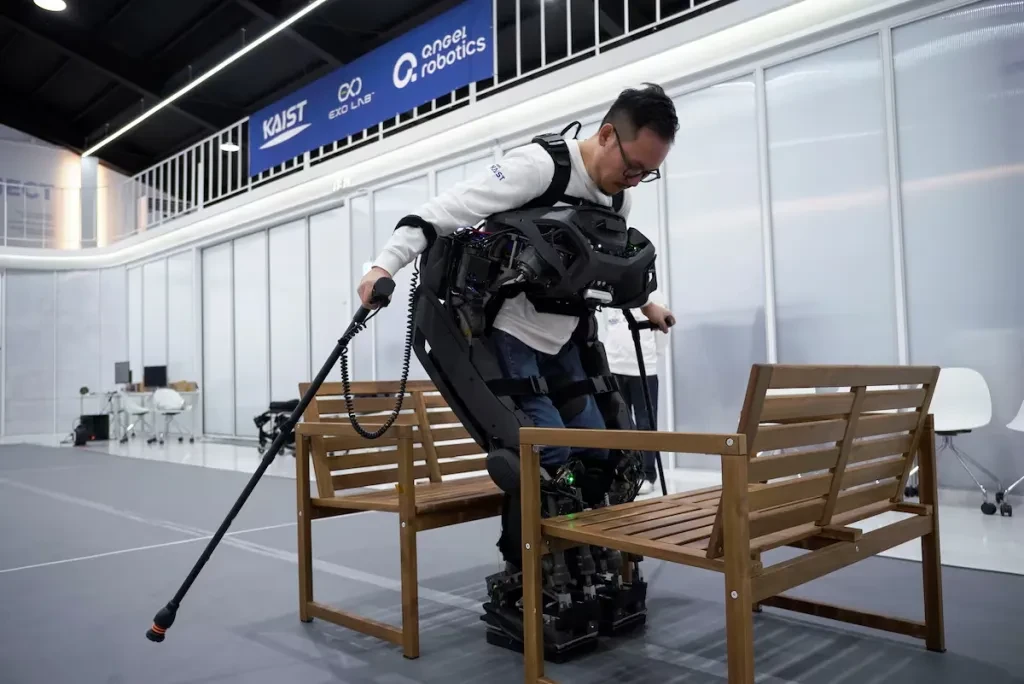
At the Cybathlon, an innovative assistive technology competition held in October 2024, paraplegic patient and KAIST exoskeleton team member Kim Seung-hwan used the WalkON Suit F1 to complete all tasks in just 6 minutes and 41 seconds, winning the gold medal.

During the competition, without any external assistance, the WalkON Suit F1 performed smoothly in daily activities, from passing through narrow entrances to preparing food. Kim Seung-hwan said, “I want to tell my son… I used to be able to walk. I want to share various experiences with him.”
There is no doubt that the WalkON Suit F1 is a significant technological breakthrough, filled with humanitarian care for people with disabilities. It truly embodies the concept of “technology serving humanity,” bringing hope for paraplegic patients to return to normal life, even though it is still some distance from mass production.
Source from ifanr
Disclaimer: The information set forth above is provided by ifanr.com, independently of Alibaba.com. Alibaba.com makes no representation and warranties as to the quality and reliability of the seller and products. Alibaba.com expressly disclaims any liability for breaches pertaining to the copyright of content.




